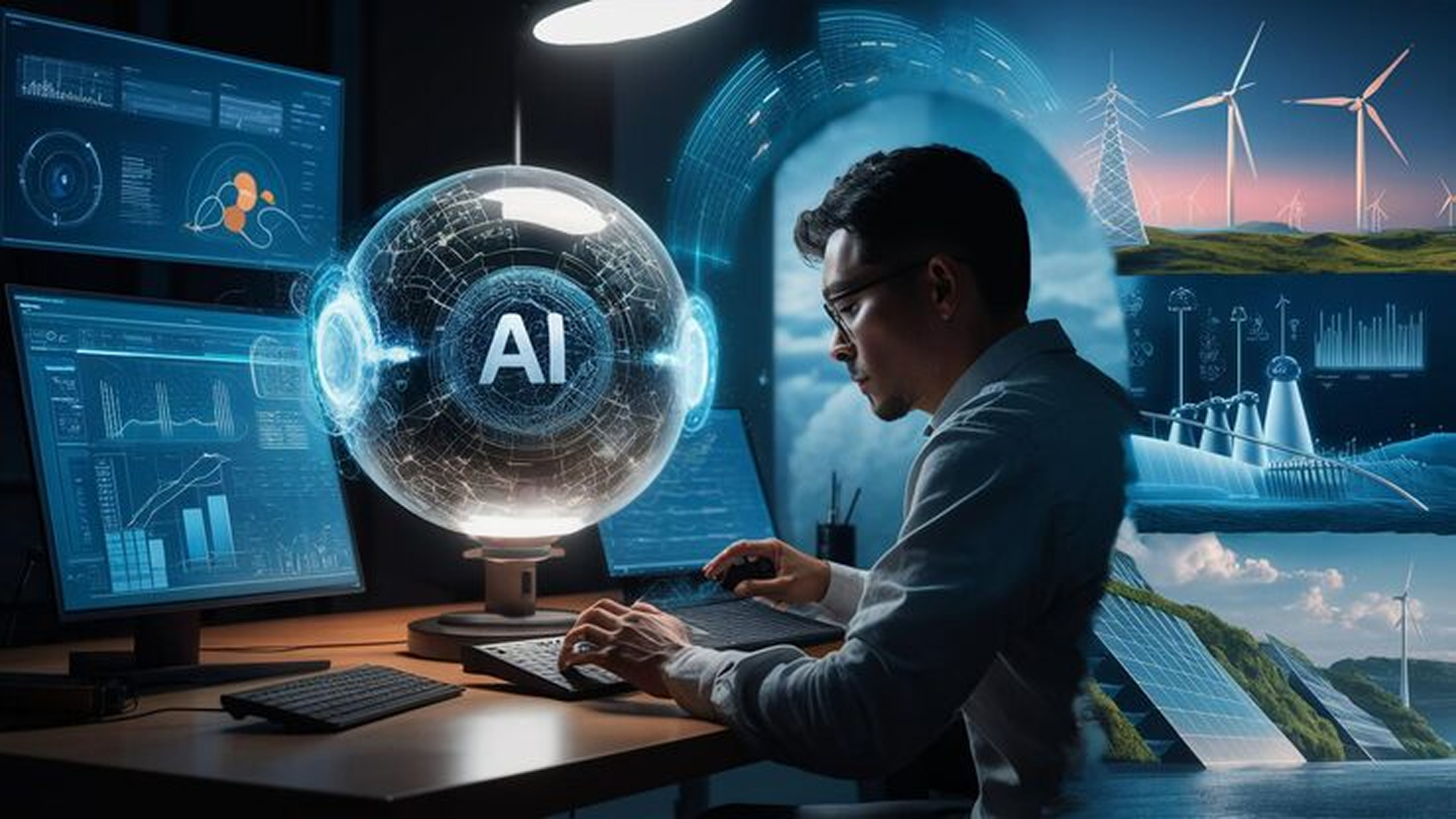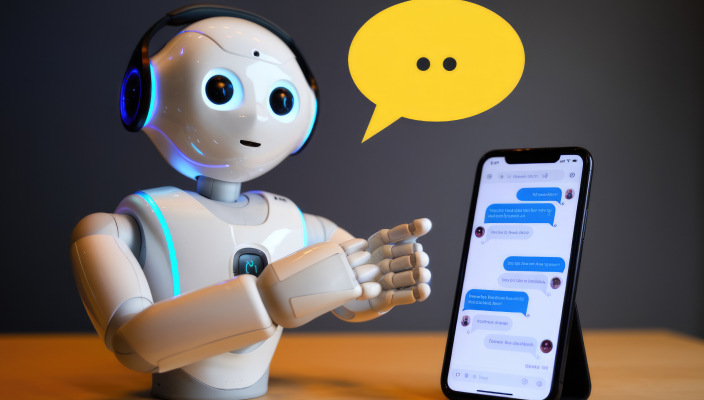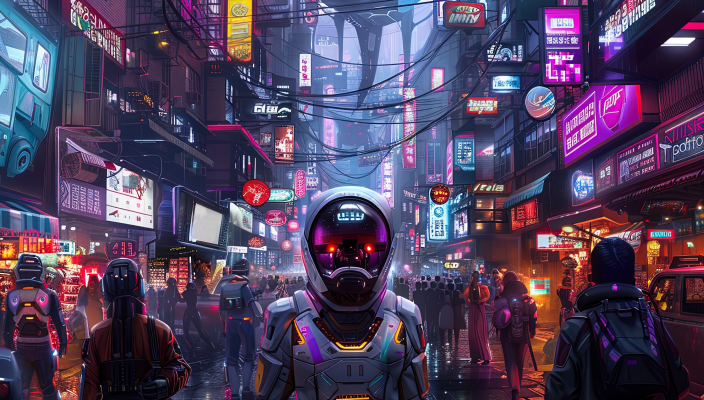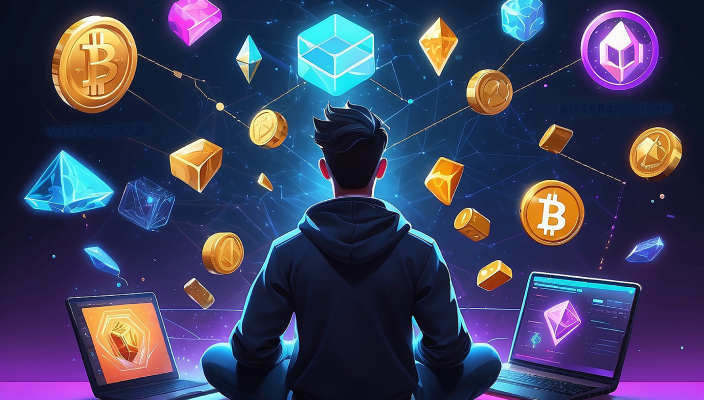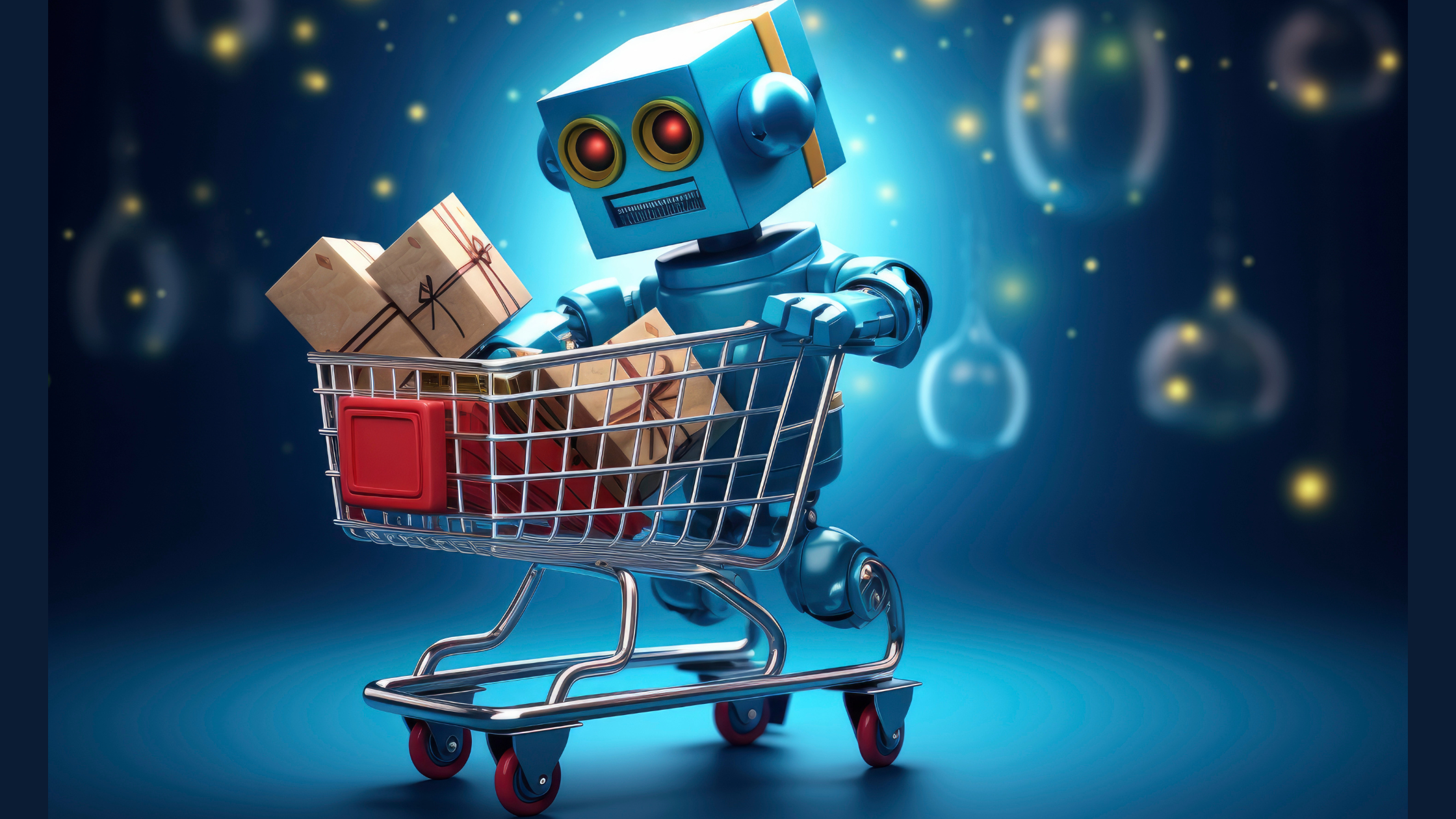The rise of artificial intelligence (AI) is revolutionizing how businesses communicate with customers, providing innovative solutions through AI chatbots. From automating customer support to driving sales and engagement, chatbots are becoming essential tools across industries. If you’re a business looking to develop an AI chatbot, you’re in the right place.
In this comprehensive guide, we’ll cover everything you need to know about AI chatbot development, including key features, steps, and market predictions for 2024-2025.
What is AI Chatbot Development?
AI chatbot development is the process of designing and programming intelligent software that simulates human conversations. These bots leverage AI, machine learning, and natural language processing (NLP) to understand and respond to user inputs effectively. An AI Chatbot Development Company specializes in creating these intelligent systems, which are increasingly used across industries to improve customer service, drive engagement, and streamline business processes.
How Does AI Chatbot Development Work?
AI chatbots are powered by natural language processing (NLP), which allows them to interpret and understand user queries. Depending on the complexity, chatbots can range from rule-based systems that follow pre-programmed commands to advanced AI-powered bots that can learn and evolve through interactions.
The Main Types of AI Chatbots
- GPT-based Chatbots: Using advanced models like GPT, these chatbots simulate near-human conversations, offering personalized responses to complex queries.
- Voice Assistants: Integrated with voice recognition technology, these bots allow hands-free interaction and provide voice-enabled services.
- Transactional Bots: Designed to handle e-commerce transactions, these chatbots process orders and provide product recommendations.
- Retrieval-based Chatbots: These bots respond to user queries by retrieving predefined responses from a knowledge base, offering quick and accurate answers.
- Custom CRM/ERP Bots: Tailored to manage internal processes, these bots integrate with CRM or ERP systems to optimize workflow.
- Social Media Bots: Built for social platforms, these chatbots engage with users, answering questions and enhancing brand visibility.
Key Features of AI Chatbot Development
- Natural Language Understanding (NLU): A chatbot’s ability to interpret user inputs accurately and respond with context-appropriate answers.
- Conversational Flow Management: Ensures that the chatbot can maintain a coherent dialogue with users, even across complex interactions.
- Integration Flexibility: AI chatbots can be integrated into various platforms like websites, mobile apps, social media, and CRM systems.
- Learning Capabilities: Advanced bots improve over time through machine learning, providing more personalized and accurate responses.
- User Personalization: AI chatbots offer customized experiences by tailoring responses based on user behavior and past interactions.
Tech Stack for AI Chatbot Development
Developing a robust AI chatbot requires a comprehensive tech stack:
- NLP Engines: Popular platforms include Google’s Dialogflow, IBM Watson, and Microsoft LUIS for language understanding.
- Machine Learning Frameworks: TensorFlow, PyTorch, and GPT are widely used for building learning models.
- Backend Development: Common programming languages like Python, Node.js, and JavaScript handle server-side operations.
- Front-end Frameworks: Libraries like React.js or Angular are used to build intuitive chatbot interfaces.
- Cloud Hosting: AWS, Google Cloud, or Microsoft Azure support scalable hosting solutions for chatbot deployment.
- Database: MySQL, MongoDB, or Firebase are used to store chatbot data, including user interactions and preferences.
Future Market Prediction of Chatbot Market
The AI chatbot market is set to explode over the next few years. According to industry forecasts, the global chatbot market is expected to grow from $3.2 billion in 2021 to over $10 billion by 2027. This rapid expansion is driven by the increasing demand for automation, 24/7 customer support, and enhanced user experiences. As Artificial Intelligence Software Development continues to advance, businesses are becoming more customer-centric, and chatbots will play a pivotal role in delivering personalized, efficient, and scalable customer service. The adoption of AI-powered chatbots in sectors like e-commerce, banking, healthcare, and education is projected to grow exponentially.
What Are the Advantages of Using AI-Powered Chatbots?
- 24/7 Availability: AI chatbots provide around-the-clock support, ensuring that customer queries are handled instantly, regardless of time zones.
- Cost Efficiency: By automating repetitive tasks like customer inquiries, chatbots reduce the need for human agents, lowering operational costs.
- Scalability: AI chatbots can handle thousands of interactions simultaneously, making them highly scalable for businesses with a large customer base.
- Improved User Experience: Instant responses to user queries enhance customer satisfaction and retention.
- Data Collection & Insights: Chatbots collect valuable data on user behavior, which can be used to personalize services and improve business decision-making.
- Consistent Brand Voice: Chatbots maintain a uniform tone and brand messaging across all customer interactions.
Steps to Build an AI Chatbot Development
Developing an AI chatbot involves multiple steps, each crucial to the success of the final product. Here’s a detailed breakdown of the process:
- Define the Objective: Identify the core purpose of the chatbot. Will it handle customer service inquiries, assist in transactions, or streamline internal processes? Defining a clear objective helps guide the development process.
- Select the AI Model: Depending on the complexity required, choose the right AI model for your bot. For basic bots, a rule-based system might suffice. However, for more advanced use cases like personalized conversations or handling ambiguous queries, an AI-powered chatbot, like those built on GPT models, would be more appropriate.
- Design the Conversational Flow: Map out the user experience by designing how conversations will flow. This includes scripting greetings, handling user queries, and determining how the chatbot will respond to various inputs. Ensure that the bot can seamlessly manage transitions between different topics.
- Development: During development, choose the appropriate tools for natural language processing (NLP), machine learning, and backend development. Leverage frameworks like TensorFlow for machine learning and Google Dialogflow or IBM Watson for NLP. Integrate the chatbot with your chosen platform, whether it’s a website, mobile app, or social media channel.
- Test & Train the Bot: Rigorous testing is essential to ensure the bot handles all types of queries effectively. Train the chatbot using real-world data to improve its accuracy and responsiveness. Testing should focus on the bot’s ability to understand various language inputs and handle diverse conversation flows without failure.
- Launch and Monitor: Once the bot passes all tests, deploy it on the chosen platform. Post-launch, continuous monitoring is necessary to fine-tune the bot’s performance. Implement user feedback mechanisms to identify any areas of improvement.
At Webllisto, we follow this structured process to deliver highly effective and scalable AI chatbots tailored to your business needs.
How Much Does It Cost to Develop an AI Chatbot?
The cost of developing an AI chatbot depends on several factors, including its complexity, the platforms it will be integrated with, and the desired features. A basic chatbot can cost between $5,000 to $10,000, while an advanced AI-powered chatbot with machine learning and integration capabilities can range from $15,000 to $50,000 or more.
Expertise of Webllisto in AI Chatbot Development
As a premier AI consulting services and AI chatbot development company, Webllisto offers end-to-end chatbot development services that ensure seamless integration and high performance. With our expertise in AI consulting services, we provide tailored solutions to meet your business needs, making sure your chatbot is optimized for efficiency and effectiveness. Here’s why we stand out:
- Comprehensive Integration Services: Whether you need a chatbot for your website, mobile app, or CRM system, Webllisto ensures seamless integration with your existing infrastructure.
- Expert Consulting & Strategy Development: We work closely with clients to define clear objectives and craft a strategic roadmap for AI chatbot implementation, ensuring the solution aligns with your business goals.
- Custom Chatbot Design: Our team of developers designs bespoke chatbots that reflect your brand identity, with a focus on user-friendly interfaces and personalized conversations.
- AI Chatbot Maintenance & Support: Post-launch, we offer continuous maintenance and support to keep your chatbot updated with the latest features and technologies.
- Tailored AI Solutions: From transactional bots to CRM-integrated systems, Webllisto specializes in creating chatbots tailored to specific industry needs, helping businesses achieve operational efficiency and enhanced customer engagement.
Our team of AI experts has worked with businesses across diverse sectors, including e-commerce, healthcare, and finance, delivering custom solutions that drive real results.
Future Market Prediction of Chatbot Market
The global chatbot market is on a significant upward trajectory. The market is expected to expand at a compound annual growth rate (CAGR) of 24% from 2021 to 2027. This growth is attributed to the increasing demand for enhanced customer interaction, AI integration into business processes, and the rise of conversational AI technology.
Sectors such as healthcare, banking, and retail will see substantial chatbot adoption, leveraging AI chatbots for customer service, appointment scheduling, and online transactions. Businesses looking to adopt chatbots now are well-positioned to benefit from this growth, staying ahead of the curve as AI continues to shape the future of customer interactions.
Conclusion
AI chatbot development is an essential investment for businesses looking to stay competitive in 2024-2025. By leveraging AI-driven conversations, businesses can provide better customer service, streamline operations, and enhance user engagement. With Webllisto as your AI chatbot development partner, you’re guaranteed a tailored, efficient solution designed to scale with your business needs.
FAQs
What is an AI chatbot and why should my business consider using one?
- An AI chatbot is a software program that uses artificial intelligence to simulate human conversation. It can provide customer support, answer queries, and perform automated tasks. Businesses use AI chatbots to improve customer experience, provide 24/7 support, and reduce operational costs.
What are the main types of AI chatbots available in 2024-2025?
- There are two main types: Rule-based chatbots, which follow predefined paths, and AI-based chatbots that use natural language processing (NLP) and machine learning to understand and respond to user queries dynamically.
What are the key steps to developing an AI chatbot for my business?
- The key steps include:
- Defining the chatbot’s purpose.
- Selecting the appropriate AI framework.
- Designing conversation flows.
- Developing and training the chatbot.
- Testing and deploying the chatbot.
- Monitoring and optimizing performance.
What platforms and technologies should I use to build an AI chatbot in 2024-2025?
- Popular technologies include Dialogflow, Microsoft Bot Framework, and Rasa for building chatbots. You’ll also need AI models like GPT or BERT, and tools for natural language processing (NLP) like Hugging Face or spaCy. Integration with messaging platforms like WhatsApp, Messenger, or Slack is common.
How can I train my AI chatbot to understand customer queries accurately?
- Train your AI chatbot using machine learning models and large datasets. Use labeled data to teach it context, intent, and entity recognition. Regularly update the training model with new data to improve accuracy and responses.
How long does it take to develop and launch an AI chatbot?
- Development time can vary depending on complexity. For a simple chatbot, it can take 4-6 weeks, whereas a more sophisticated AI-powered chatbot might take several months due to training and integration requirements.
How much does it cost to develop an AI chatbot?
- The cost depends on the complexity of the chatbot, the platforms you choose, and whether you develop it in-house or outsource. For a basic chatbot, the cost may range from $5,000 to $30,000, while more complex, AI-driven bots could exceed $50,000.
What are the biggest challenges in developing an AI chatbot in 2024-2025?
- Challenges include accurately understanding diverse human language inputs, integrating the chatbot with existing systems, ensuring data privacy, and maintaining the bot’s conversational relevance as it interacts with users over time.
How can I measure the success of my AI chatbot after deployment?
- Key performance indicators (KPIs) include user satisfaction, conversation completion rates, error rates, customer retention, and time saved in customer service. Use chatbot analytics tools to track these metrics and optimize performance.
How do I keep my AI chatbot up-to-date with evolving customer needs?
- Regularly update your chatbot’s training data with new interactions and customer feedback. Implement periodic performance reviews and refine conversation flows based on real-world usage data. Incorporate machine learning techniques to enable continuous improvement.



































